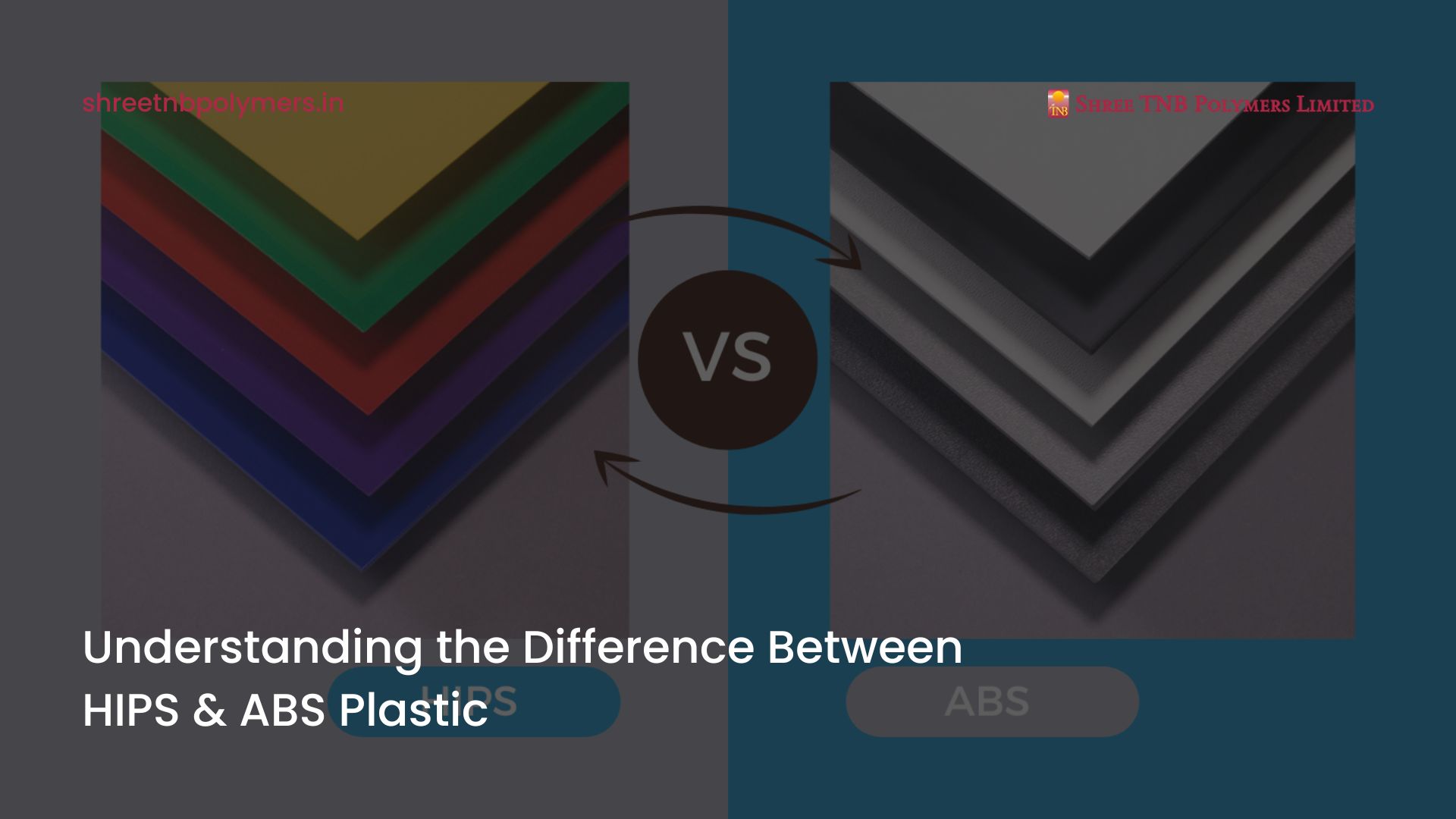Plastics are essential in various sectors, from packaging to manufacturing automobiles. Two of the most widely utilized thermoplastics are High Impact Polystyrene (HIPS) and Acrylonitrile Butadiene Styrene (ABS). Although both offer durability, impact resistance, and ease of processing, they differ in important factors like durability, flexibility, strength, and suitability.
]If you're unsure about the right plastic to complete your task, this guide will aid you in understanding the difference between HIPS and ABS and deciding which plastic best fits your needs.
What is HIPS (High Impact Polystyrene)?
High-impact polystyrene (HIPS) is a thermoplastic plastic derived from polystyrene that is altered with rubber to improve its impact resistance. It's widely used for packaging, signage, and consumer products because of its ease of processing and cost-effectiveness.
Key Properties of HIPS:
- Impact Resistant: Moderate appropriate for use in everyday situations.
- Surface Finish: Soft and shiny, great to print.
- Flexible: More elastic than ABS and more rigid.
- Chemical Resistance: Moderate, Not very insensitive to chemical corrosives.
- Processing Simple to mold, extrude, and thermoform.
- Price: More economical in comparison to ABS.
Typical Applications of HIPS:
- Food containers and containers for disposables
- Point-of-sale and signage
- Home and toy items, as well as toys
- Equipment and medical tray casings
- Protective packaging for electronics
What is ABS (Acrylonitrile Butadiene Styrene)?
Acrylonitrile Butadiene Styrene (ABS) is a more durable thermoplastic that is composed of three monomers, namely acr, acrylonitrile (provides the chemical resistance) as well as butadiene (enhances the strength of impact) as well, Styrene (improves flexibility and processing capabilities). ABS is widely used in electronic consumer products and industrial equipment because of its strength and endurance.
Key Properties of ABS:
- High Impact Resistant: High and suitable for applications that require heavy-duty.
- Surface Finish: This can be glossy or textured, depending on processing.
- Flexibility: Flexible than HIPS, with more absorption of shock.
- Chemical Resistance: Excellent resistance to acids, oil, and alkalis.
- Processing: Can be injection molded, extruded, or CNC machined.
- Price: More expensive than HIPS due to the more advanced properties of HTML0.
Common Applications of ABS:
- Automotive components (dashboards, interior panels)
- Consumer electronics (laptop casings, keyboards)
- 3D printing filaments
- Industrial equipment housings
- Gear for protection and luggage
HIPS vs. ABS: Key Differences
| Feature | HIPS (High Impact Polystyrene) | ABS (Acrylonitrile Butadiene Styrene |
| Impact Strength | Moderate | High |
| Flexibility | More rigid, less flexible | More flexible, absorbs shock |
| Surface | Finish Smooth, good for printing | Can be glossy or textured |
| Chemical Resistance | Moderate | Excellent |
| Temperature Resistance | Lower heat tolerance | Higher heat resistance |
| Processing | Easy to mold and thermoform | Suitable for injection molding and CNC machining |
| Best for | Packaging, signage, household items | Automotive, electronics, industrial parts |
Choosing Between HIPS and ABS: Which One is Right for You?
Choose HIPS if:
- You require a budget-friendly material that is resistant to impact.
- The program requires simple thermoforming and molding.
- Your product must have the smoothest, most printable design.
- The plastic is utilized for low-stress or disposable applications.
Choose ABS if:
- You need a material that has superior impact resistance and durability.
- The material must withstand heat, harsh chemicals, and other elements.
- This product can be utilized in automobiles, industrial applications, and premium consumer goods.
- An extra durable and long-lasting product is needed.
Final Thoughts
ABS and HIPS are used extensively in manufacturing; however, their characteristics allow them to be used in various applications. HIPS is a good option for light and economical applications such as signage, packaging, and signage. At the same time, ABS performs well in highly-performance and high-impact applications like electronic components for cars and consumer electronics.
If you know the different aspects of safety, flexibility, cost, and chemical resistance, make a marketed choice about which materials will best suit your requirements. It doesn't matter if you require an affordable option like HIPS or a more substantial choice such as ABS. Both materials provide significant advantages based on your specific industry requirements.





